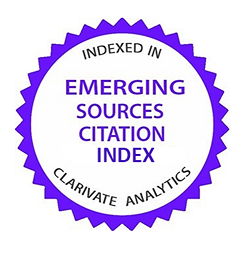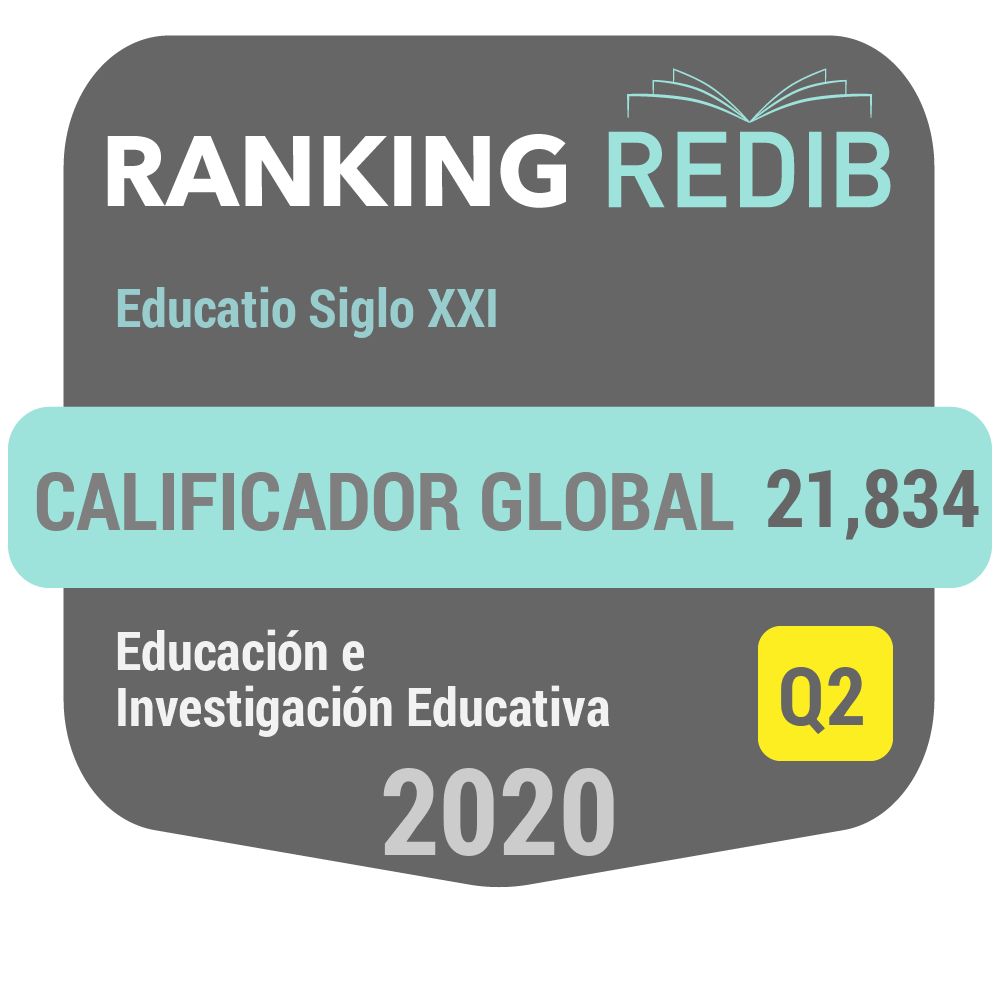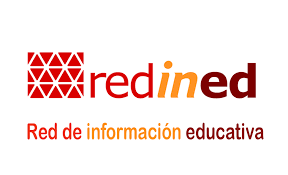Analysing a project based on active breaks: teachers’ perceptions
Abstract
Active breaks are a feasible and effective way to introduce motor competences into the learning process, addressing the physical, psycho-emotional, and social needs of students. However, the effect of active breaks on students' executive functions and motivation remains unclear. The aim of the study was to evaluate the impact of a co-designed and implemented program of eminently cooperative active breaks on executive function and motivational climate in pre-school and elementary school classrooms. The sample consisted of 24 teachers from a school in Zaragoza, Spain –age: 44.25 ± 10.52 years; teaching experience: 16 ± 9.87 years–. For four months, the collaborating teaching team was accompanied in the co-design of the active breaks program through training sessions and the creation of spaces for reflection among all the agents involved. Data collection was through discussion groups at the end of the program implementation. Subsequently, content analysis of the transcripts was carried out and the QSR-NVIVO 11 program was used to process the data. The results showed that teachers identify the cooperative active breaks as a tool to improve the motivational climate in the classroom and to work on the students' executive functions. Considering that participation in active breaks is safe, low cost, easy to learn and apply by teachers and effective in meeting the needs of students, teachers should be encouraged to implement this type of motor activities. Especially those that include cognitive engagement, a social component of cooperation, that cater to the enjoyment and motivation of students and encourage rethinking the presence we give to the body in the learning process and evolutionary development at these ages.
Downloads
-
Abstract814
-
PDF (Español (España))418
References
Berrios-Aguayo, B., Latorre-Román, P. Á., Salas-Sánchez, J. y Pantoja Vallejo, A. (2022). Effect of physical activity and fitness on executive functions and academic performance in children of elementary school. A systematic review. Cultura, Ciencia y Deporte, 17(51), 85–103. Recuperado de https://doi.org/https://doi.org/10.12800/ccd.v17i51.1699
Diamond, A. (2013). Executive Functions. Annual Review of Psychology, 64(1), 135–168. Recuperado de https://doi.org/10.1146/annurev-psych-113011-143750
Diamond, A. y Ling, D. S. (2016). Conclusions about interventions, programs, and approaches for improving executive functions that appear justified and those that, despite much hype, do not. Developmental Cognitive Neuroscience, 18, 34–48. Recuperado de https://doi.org/10.1016/j.dcn.2015.11.005
Egger, F., Benzing, V., Conzelmann, A. y Schmidt, M. (2019). Boost your brain, while having a break! The effects of long-term cognitively engaging physical activity breaks on children’s executive functions and academic achievement. PLoS ONE, 14(3). Recuperado de https://doi.org/10.1371/journal.pone.0212482
Egger, F., Conzelmann, A. y Schmidt, M. (2018). The effect of acute cognitively engaging physical activity breaks on children’s executive functions: Too much of a good thing? Psychology of Sport and Exercise, 36, 178–186. Recuperado de https://doi.org/10.1016/j.psychsport.2018.02.014
Escolano-Pérez, E., y Bravo Álvarez, M. Á. (2017). Procesos cognitivos y afectivos implicados en la resolución de problemas: desarrollo e intervención [Cognitive and affective processes involved in problem solving: development and intervention]. Miscelánea Comillas, 75(146), 41–69. Recuperado de https://revistas.comillas.edu/index.php/miscelaneacomillas/article/view/7955/7708
Fernández-Espínola, C., Tomás, M., Robles, A., Collado-Mateo, D., Almagro, B. J., Viera, E. C., Javier, F. y Fuentes-Guerra, G. (2020). Effects of Cooperative-Learning Interventions on Physical Education Students’ Intrinsic Motivation: A Systematic Review and Meta-Analysis. International Journal of Environmental Research and Public Health, 17, 4451. Recuperado de https://doi.org/10.3390/ijerph17124451
Fernández-Río, J., Cecchini, J. A. y Méndez-Giménez, A. (2014). Effects of cooperative learning on perceived competence, motivation, social goals, effort and boredom in prospective Primary Education teachers. Journal for the Study of Education and Development, 37(1), 57–89. Recuperado de https://doi.org/10.1080/02103702.2014.881650
Li, L., Zhang, J., Cao, M., Hu, W., Zhou, T., Huang, T., Chen, P. y Quan, M. (2020). The effects of chronic physical activity interventions on executive functions in children aged 3–7 years: A meta-analysis. In Journal of Science and Medicine in Sport (Vol. 23, Issue 10, pp. 949–954). Elsevier Ltd. Recuperado de https://doi.org/10.1016/j.jsams.2020.03.007
Mavilidi, M. F., Lubans, D. R., Morgan, P. J., Miller, A., Eather, N., Karayanidis, F., Lonsdale, C., Noetel, M., Shaw, K. y Riley, N. (2019). Integrating physical activity into the primary school curriculum: Rationale and study protocol for the “Thinking while Moving in English” cluster randomized controlled trial. BMC Public Health, 19(1). Recuperado de https://doi.org/10.1186/s12889-019-6635-2
Mazzoli, E., Salmon, J., Teo, W.-P., Pesce, C., He, J., Ben-Soussan, T. D. y Barnett, L. M. (2021). Breaking up classroom sitting time with cognitively engaging physical activity: Behavioural and brain responses. PLoSONE, 16(7). Recuperado de https://doi.org/10.1371/journal.pone.0253733
Navarro-Patón, R., Rodríguez-Fernández, J. E. y Peixoto-Pino, L. (2019). Preferencias de interacción social en educación física de escolares de Educación Primaria y Secundaria de Lugo: un estudio descriptivo. Recuperado de http://hdl.handle.net/10347/24811
Pastor-Vicedo, J. C., Prieto-Ayuso, A., Pérez, S. L. y Martínez-Martínez, J. (2021). Active breaks and cognitive performance in pupils: A systematic review. Apunts. Educacion Fisica y Deportes, 146, 11–23. Recuperado de https://doi.org/10.5672/APUNTS.2014-0983.ES.(2021/4).146.02
Ryan, R. M. y Deci, E. L. (2000). Self-determination theory and the facilitation of intrinsic motivation, social development, and well-being. American Psychologist, 55(1), 68–78. Recuperado de https://doi.org/10.1037/0003-066X.55.1.68
Salazar-Ayala, C. M., Gastélum-Cuadras, G., Hernández, E. H. y Moreno-Murcia, J. A. (2021). Autonomy support in student’s resilience through a cognitive-social model of motivation. European Journal of Education and Psychology, 14(1). Recuperado de https://doi.org/10.32457/ejep.v14i1.1548
Schmidt, M., Jäger, K., Egger, F., Roebers, C. M. y Conzelmann, A. (2015). Cognitively Engaging Chronic Physical Activity, But Not Aerobic Exercise, Affects Executive Functions in Primary School Children: A Group-Randomized Controlled Trial. Journal of Sport and Exercise Psychology, 37(6), 575–591. Recuperado de https://doi.org/10.1123/jsep.2015-0069
Standage, M., Duda, J. y Ntoumanis, N. (2003). Predicting motivational regulations in physical education: the interplay between dispositional goal orientations, motivational climate and perceived competence. Journal of Sports Sciences, 21(8), 631–647. Recuperado de https://doi.org/10.1080/0264041031000101962
Tomporowski, P. D., Davis, C. L., Miller, P. H. y Naglieri, J. A. (2008). Exercise and Children’s Intelligence, Cognition, and Academic Achievement. Educational Psychology Review, 20(2), 111–131. Recuperado de https://doi.org/10.1007/s10648-007-9057-0
Vaca-Escribano, M. J. (2002). Relatos y reflexiones sobre el tratamiento pedagógico de lo corporal en la Educación Primaria. Madrid: Asociación cultural Cuerpo, Educación y Motricidad.
Vallerand, R. J. (2007). A Hierarchical Model of Intrinsic and Extrinsic Motivation for Sport and Physical Activity. In M. S. Hagger y N. L. D. Chatzisarantis (Eds.), Intrinsic Motivation and Self-Determination in Exercise and Sport (pp. 255–279). Champaign, IL: Human Kinetics.
Vazou, S. y Smiley-Oyen, A. (2014). Moving and academic learning are not Antagonists: Acute effects on executive function and enjoyment. Journal of Sport and Exercise Psychology, 36(5), 474–485. Recuperado de https://doi.org/10.1123/jsep.2014-0035
Velázquez-Callado, C. (2018). El aprendizaje cooperativo en educación física: planteamientos teóricos y puesta en práctica. Acción motriz, 20, 7–16.
Wen, X., Zhang, Y., Gao, Z., Zhao, W., Jie, J. y Bao, L. (2018). Effect of Mini-Trampoline Physical Activity on Executive Functions in Preschool Children. BioMed Research International, 2018, 1–7. Recuperado de https://doi.org/10.1155/2018/2712803
Xue, Y., Yang, Y. y Huang, T. (2019). Effects of chronic exercise interventions on executive function among children and adolescents: A systematic review with meta-analysis. In British Journal of Sports Medicine, 53(2), 1397–1404. Recuperado de https://doi.org/10.1136/bjsports-2018-099825
Zeng, N., Ayyub, M., Sun, H., Wen, X., Xiang, P. y Gao, Z. (2017). Effects of Physical Activity on Motor Skills and Cognitive Development in Early Childhood: A Systematic Review. BioMed Research International, 2017, 1–13. Recuperado de https://doi.org/10.1155/2017/2760716
Copyright (c) 2024 Servicio de Publicaciones de la Universidad de Murcia

This work is licensed under a Creative Commons Attribution-NonCommercial-NoDerivatives 4.0 International License.
Original work publishes in this journal is subject to the following terms:
1. Murcia University Press (the publishing house) holds the copyright of the publishes work, and favours and allows their reutilization under the use license stated in point 2.
© Servicio de Publicaciones, Universidad de Murcia, 2015
2. Work is published in the electronic edition under a license (Creative Commons Reconocimiento-NoComercial-SinObraDerivada 4.0 España (legal text). They can be copied, used, disseminated, transmitted and publicly presented, as long as: i) authorship and original publication source is acknowledged (journal, publishing house and URL of the work); ii) are not used for commercial purposes; iii) the existence and specifications of this use license is stated.
3. Conditions for self-archive. Authors are allowed and encouraged to disseminate electronically the pre-pint (before review) and/or post-print (accepted for publication) versions of their work before their publication since that favours earlier circulation and dissemination resulting in an increased chance for the authors to be cited and for the work to reach a bigger share of the academic community. Colour: RoMEO: green.







